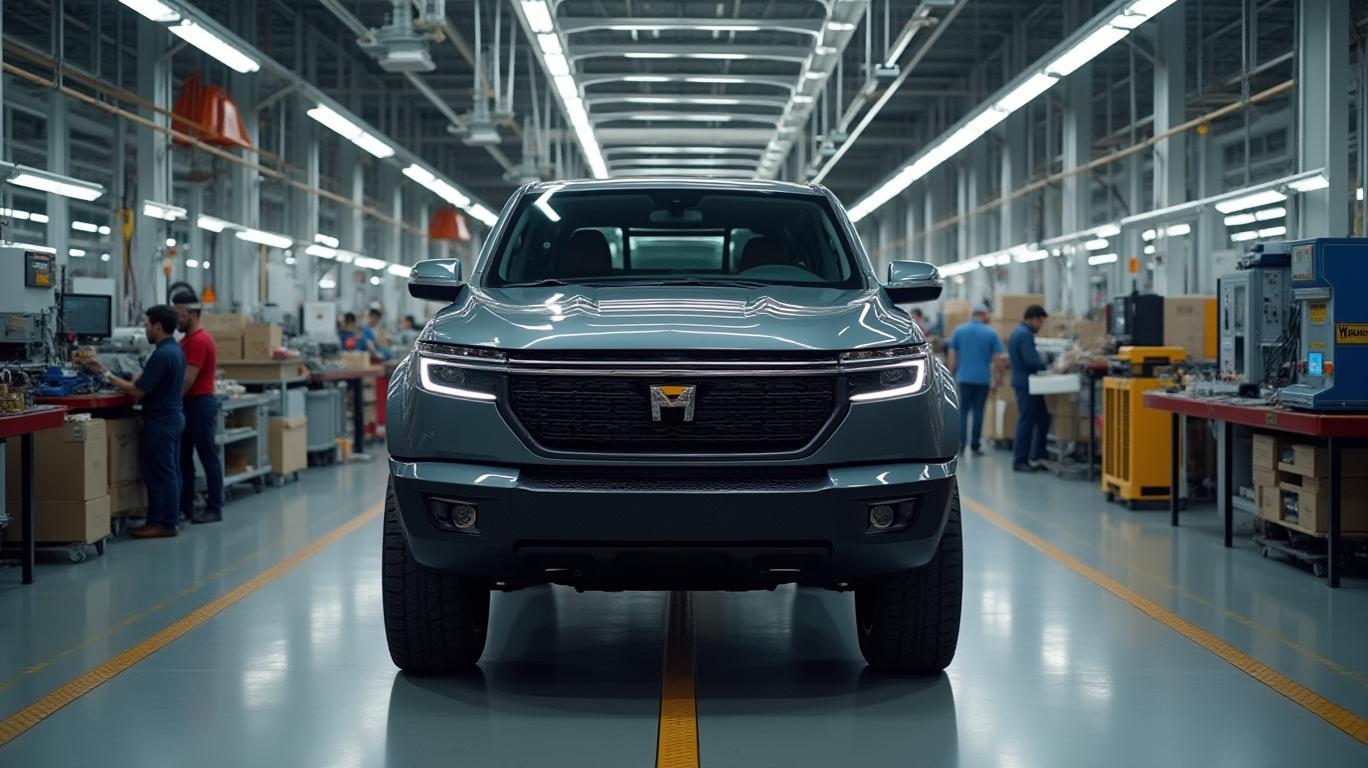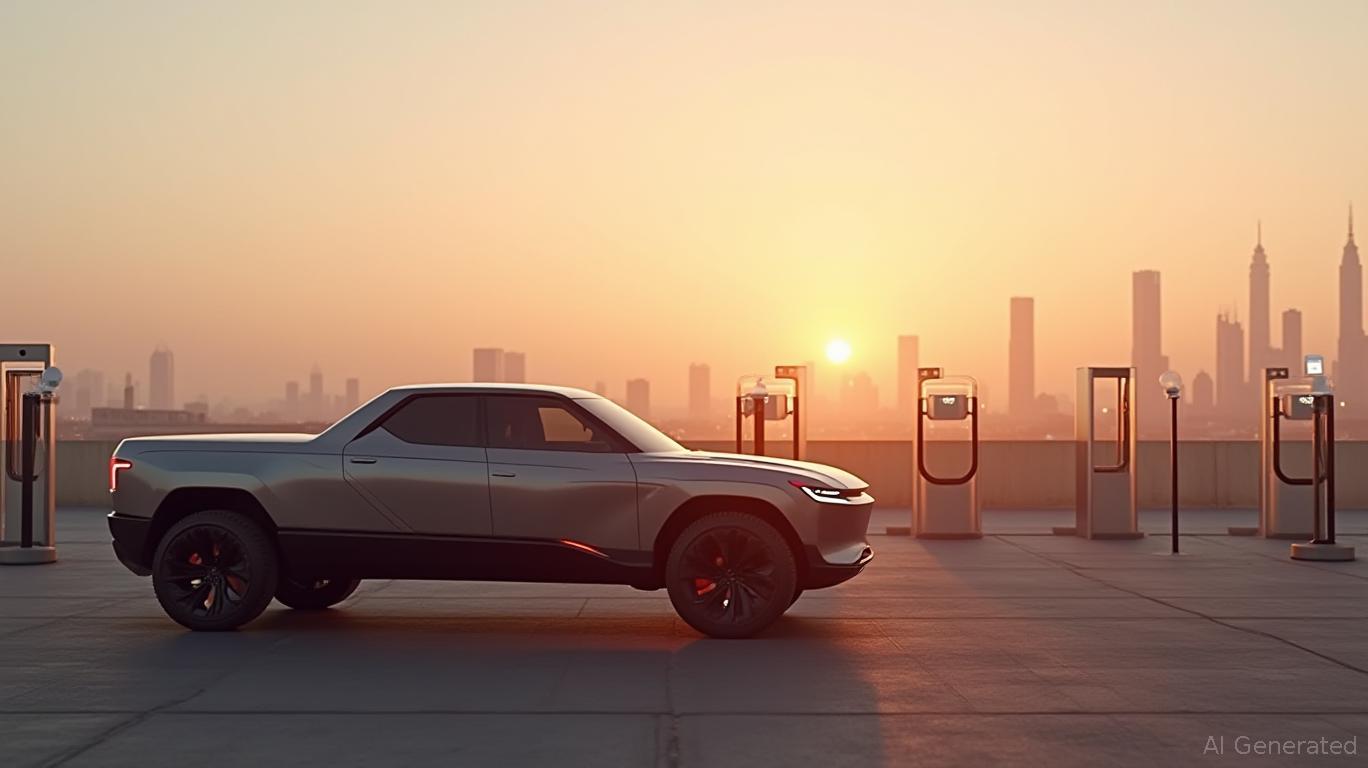Rivian's Gross Profit Milestone Masks Tariff-Driven Headwinds: A Critical Inflection Point?
Rivian Automotive reported its second consecutive quarter of positive gross profit in Q1 2025, reaching $206 million—the highest in its history—a milestone that unlocked a $1 billion investment from Volkswagen Group. Yet beneath this financial progress lies a stark reality: tariffs and global trade policies have become existential challenges for the EV maker, forcing costly adjustments to its production strategy. With capital expenditures (CapEx) rising by at least $150 million and delivery targets lowered, the question remains: Can Rivian sustain its growth trajectory amid escalating geopolitical headwinds?
Financial Highlights: Progress Amid Contradictions
Rivian’s Q1 results revealed a company balancing milestones and setbacks. Gross profit rose to $206 million, driven by a $22,600 reduction in per-vehicle production costs compared to Q1 2024, with software and services contributing $114 million—up from just $88 million a year earlier. Total revenue hit $1.24 billion, exceeding expectations, buoyed by $157 million in regulatory credits and surging software sales.
However, the company revised its 2025 delivery forecast downward to 40,000–46,000 units from a prior 46,000–51,000 range. This cut reflects a strategic shift: Rivian is stockpiling battery cells to mitigate shortages until 2026 and reconfiguring supply chains to avoid tariff penalties. The result? CapEx guidance was raised to $1.8 billion–$1.9 billion, up from $1.6 billion–$1.8 billion, with 70% of the increase tied to tariffs.

The Tariff Trap: How Global Trade Policies Are Restructuring Costs
Rivian’s tariff-related struggles defy its “100% U.S.-made” branding. Despite sourcing most components domestically or through USMCA-qualified suppliers, the company faces escalating costs due to:
- 25% tariffs on imported auto parts: Even domestically manufactured vehicles rely on imported components, with tariffs adding $1,000–$2,000 per vehicle.
- 145% tariffs on Chinese goods: Critical EV components like battery cells and rare earth materials face prohibitive levies. China’s restrictions on rare earth exports—accounting for 40% of an EV’s cost—have further strained supply chains.
To circumvent these barriers, Rivian is relocating LG Energy Solution’s battery production to its Arizona facility, avoiding South Korean imports, and stockpiling cells to hedge against shortages. Yet these measures add to CapEx, squeezing margins.
Strategic Offensives: The Volkswagen Partnership and Software Growth
Rivian’s $1 billion investment from Volkswagen, pending finalization by June 30, represents a lifeline. The partnership aims to share EV software and electrical architecture, potentially slashing development costs by 30% and accelerating timelines for Rivian’s R2 SUV (slated for 2026). Meanwhile, software revenue surged to $318 million in Q1, signaling a scalable revenue stream that could offset hardware margin pressures.
The Risks: Trade Policy Uncertainty and Loan Scrutiny
The company’s outlook hinges on stable trade policies. Changes to USMCA rules or delays in the federal EV tax credit—which currently requires 50% of battery components to come from North America—could disrupt Rivian’s supply chain. Additionally, the Biden administration’s scrutiny of Rivian’s $6.6 billion DOE loan for its Atlanta plant adds financial uncertainty.
Conclusion: A Fragile Equilibrium
Rivian’s Q1 results underscore a paradox: operational efficiency and strategic partnerships are balancing tariff-driven costs, but the company’s growth is tethered to macroeconomic variables beyond its control. Key takeaways:
- Positive momentum: Gross profit milestones, software growth, and the Volkswagen partnership provide a foundation for long-term viability.
- Near-term risks: Tariffs and supply chain bottlenecks could push adjusted EBITDA losses to $1.9 billion in 2025, exceeding projections.
- Market sentiment: Investors must weigh Rivian’s $1.24 billion revenue against its $1.9 billion CapEx target—a ratio suggesting capital intensity remains unsustainable without further cost reductions or policy clarity.
For investors, Rivian’s story is one of resilience but also fragility. While its software-driven revenue streams and manufacturing scale offer hope, the company’s ability to navigate tariffs and geopolitical risks will determine whether its Q1 progress becomes a springboard—or a fleeting milestone.
The path forward hinges on two critical variables: the resolution of trade disputes and the execution of its partnership with Volkswagen. Without both, Rivian’s road to profitability may remain as bumpy as the off-road trails its vehicles conquer.


_442a2dcc1749832873286.jpeg)
_e68fac6d1749831664430.jpeg)





